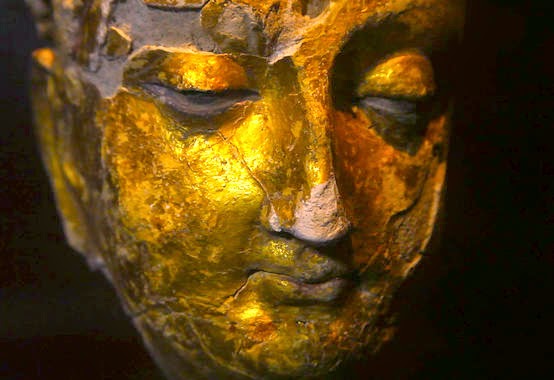Saturday, November 22, 2014 -  Afghanistan,Buddhism,Mes Aynak
Afghanistan,Buddhism,Mes Aynak
 No comments
No comments
 Afghanistan,Buddhism,Mes Aynak
Afghanistan,Buddhism,Mes Aynak
 No comments
No comments
Brent Huffman's documentary "Saving Mes Aynak" will screen six times at the International Documentary Film Festival in Amsterdam Nov. 22-30
 |
| Image from Mes Aynak (Brent Huffman) |
by Catherine Sezgin, ARCA Blog Editor
Brent Huffman's documentary Saving Mes Aynak will premiere at the International Documentary Film Festival in Amsterdam this week. Here's a list of the show times. A synopsis of the film:
“Like a mother watching her child dying right in front of her.” This is how archeologist Qadir Temori describes his feelings about the excavations that are threatened with destruction, all because a Chinese company will mine for copper directly on the archeological site Mes Aynak in Afghanistan. Temori is here with an international team of experts and volunteers, braving the threat of terrorism to dig up stunning ancient treasures. According to him, they are comparable in scale to a discovery such as Pompeii. It’s a race against the clock, because the mining company has given the archeologists a limited timeframe to excavate the 2,000-year-old Buddhist structures and relics. As in the case of the giant Buddhas of Bamiyan, destroyed by the Taliban around the turn of the millennium, valuable archeological objects are in jeopardy once again, although for different reasons this time. “Our history and heritage will vanish along with the money,” Temori sighs, indicating that the country will see little of the huge sums paid by the Chinese company to Afghan government officials for the mining rights. But there is hope: a protest has been registered with UNESCO and the Chinese company has put its copper mining activities on hold, at least for the time being. Saving Mes Aynak shows the dedication of the archeologists and the vulnerability of their discoveries, captured here in all their delicate splendor. - See more at: http://www.idfa.nl/industry/tags/project.aspx?id=DC944A3B-B213-4989-B99B-B72A46366BC9&tab#sthash.pFHrt1np.dpufAnd here's the link to the segment on the November 19 PBS Newshour by Frank Carlson, "In 'Saving Mes Aynak,' a real-life Indiana Jones fights to protect Afghanistan's Buddhist heritage".
Here are previous posts on the ARCA blog regarding Mes Aynak:
In this profile of Dr. Laura Rush, it is noted that the U.S. Military Army Corp of Engineers allocated one million dollars to support artifact preservation in Mes Aynak.
"Mes Aynak's archaeological wealth from the Bronze Age to ancient Buddhists threatened by excavation of world's second largest copper deposit" September 11, 2012
"Documentarian Brent Huffman Warns of Dangerous Precedent Being Set in Afghanistan if Mes Aynak is destroyed in order to mine copper" September 13, 2012
"Mes Aynak Archaeologists Given More Time to Remove Relics and Artifacts" January 7, 2013
"The Buddhas of Mes Aynak: Kickstart Funds Used to Purchase Computers and Cameras for Afghan Archaeology Office in Kabul" April 14, 2013
"American Institute for Roman Culture to Host Third Annual UNLISTED Conference on Archaeological Cultural Heritage" April 15, 2013
"Brent E. Huffman Presenting Special Advanced Screening of "Saving Mes Aynak" at the Rubin Museum of Art in New York on Dec. 18" December 15, 2013
"Fair Observer's Will Calhoun publishes two-part interview with documentarian Brent H. Huffman on "The Race to Save Mes Aynak" (February 3, 2014)



